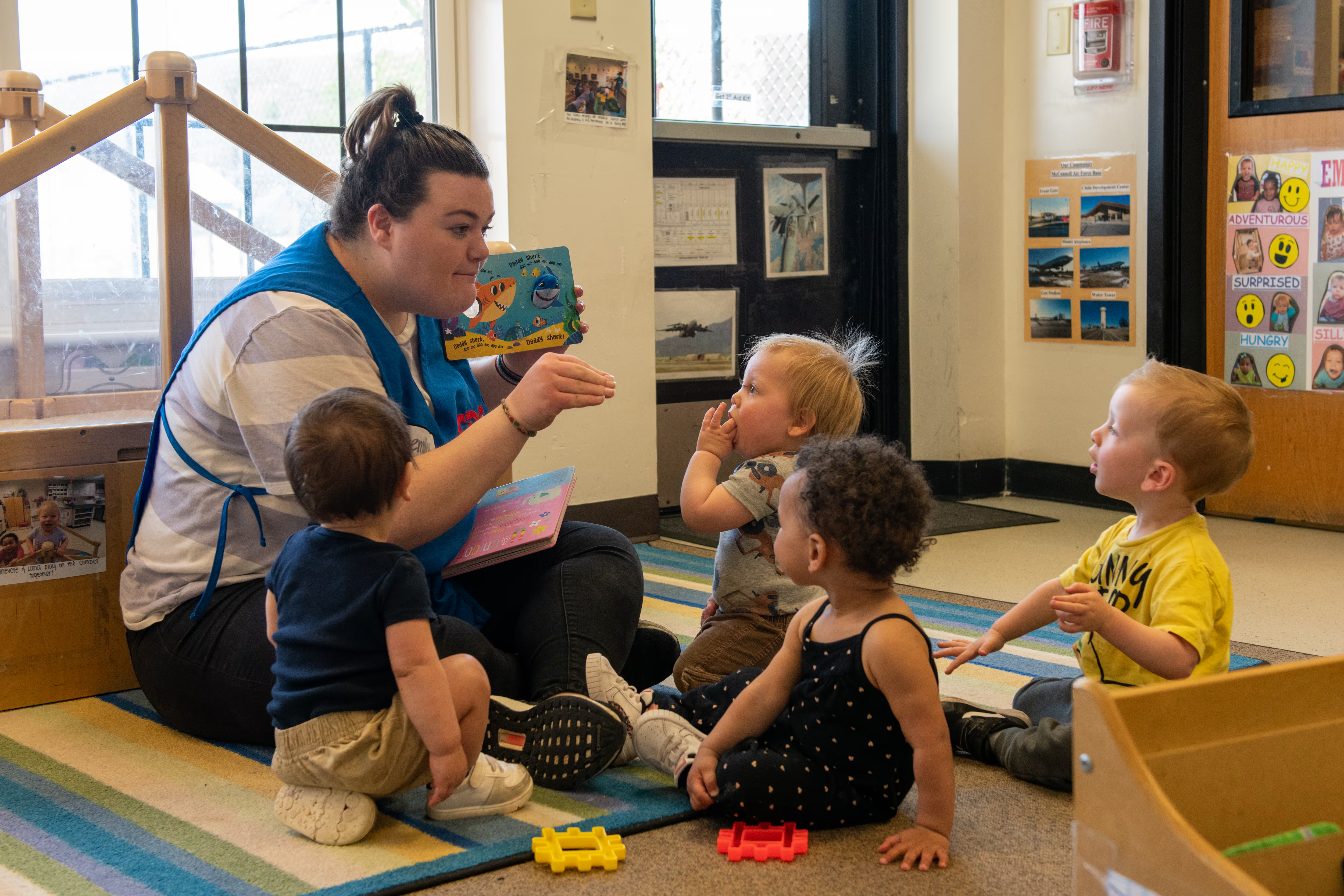A new benefit is coming to military families — the Dependent Care Flexible Spending Account, which will start on Jan. 1. However, service members must take action during the federal benefits open season in order to enroll in the program.
The flexible spending account, announced by Department of Defense officials earlier this year, helps defray the cost of child care and other dependent care by providing tax savings. Many military families have long faced difficulties in finding affordable, quality child care, and the pandemic has exacerbated the problem, with lasting effects on availability.
Military Times has delved into details about the new benefit, how you enroll, how it works, and what you need to consider.
Service members can enroll in this benefit program through the Federal Flexible Spending Account Program, known as FSAFEDS, which is sponsored by the Office of Personnel Management. Enrollment happens during open season every year, and this year it’s Nov. 13 through 11:59 p.m. Eastern Standard Time Dec. 11. FSAFEDS provides information for military members about the program in advance of the enrollment period.
The bottom line is the savings. With a $5,000 contribution, a family with an average federal income tax rate of 12% could potentially save about $600 by participating in the program, according to Jennifer Walker, DoD’s executive director for dependent care flexible spending accounts. That estimate is for general purposes, and Walker noted that it doesn’t take into account potential added savings from FICA and state income taxes.
In 2023, married couples with income from $22,000 to $89,450 are in the 12% tax rate bracket. The Internal Revenue Service adjusts these brackets annually for inflation, and is expected to announce the 2024 tax brackets within the next few weeks.
According to the Bureau of Labor Statistics, as of 2021, about 43% of American workers had access to dependent care flexible accounts. For years, military family advocates have urged defense officials to offer this benefit to ease the cost of child care.
Families can contribute as little as $100, and as much as $5,000 over the year to this account. A $5,000 yearly contribution works out to about $417 a month from military pay. That amount is deducted from pay before taxes, so this reduces the amount of total income subject to taxes. Thus, a family with $60,000 in income who contributes $5,000 to their account would only be taxed on $55,000.
Common eligible expenses for flexible spending accounts include child care, preschool, before- and after-school care, day camps, and child or adult day care. Examples of expenses that are not eligible include elementary school tuition, overnight or sleepaway camps, nursing care, and activity lessons such as piano or karate lessons.
Starting in 2024, service members who have enrolled through FSAFEDS will submit substantiated claims for their dependent care expenses through FSAFEDS, to get reimbursed for their expenses.
Everyone’s situation is different, and Walker advised service members to estimate their expected dependent care expenses for 2024, to determine the amount they need to set aside in these accounts. She encouraged troops to take advantage of DoD’s free counseling and advice from personal financial management counselors at many military installations, and tax counselors available all year through DoD’s Military OneSource.com. FSAFEDS also offers free benefits counseling.
Who is eligible?
Active duty members and Active Guard Reserve members on Title 10 orders who pay for the care of an eligible dependent are eligible. Those are children under age 13, or dependents of any age if they are physically or mentally incapable of caring for themselves.
The dependent who receives the care must be claimed as a dependent on the federal tax return.
The care must be required to enable the service member and spouse, if married, to work, look for work or attend school full time.
Service members who use the DoD child care fee assistance program can also participate in the flexible spending accounts, based on the amount they’re paying out of pocket for child care.
While the enrollment period is generally limited to the federal benefits open season period, there may be exceptions made for qualifying life events, such as permanent change of station moves, deployments, birth of a child, or divorce. A service member can enroll, disenroll, or change their election amount when these events happen. But, as Walker noted, when such an event happens, the funds already contributed to the flex spending account will stay in the account, and can continue to be claimed for eligible expenses until the end of the calendar year. Funds that have already been contributed won’t be refunded if there’s a qualifying life event.
Tax implications
While the flexible spending account does offer tax savings to help reduce the bite of child care costs, there are some points to consider.
If you have more than $5,000 in dependent care expenses, you may still be able to take advantage of both the child and dependent care tax credit and the flexible spending account, Walker noted. But you can’t use the same expenses for both tax incentives. FSAFEDS provides a calculator to help you determine the best option between a flexible spending account and the child and dependent care tax credit.
If the non-military spouse of a service member has a flexible spending account through his or her employer, or if that spouse receives dependent care assistance through the employer, the combination of the dependent care flexible spending account and that employer’s fee assistance can’t exceed $5,000 per tax year.
RELATED

Getting ready
Walker advised service members to decide whether they want to enroll in the dependent care flexible spending account by estimating the amount of money they’re going to spend on child care in 2024. Remember that for many military families using DoD child care, the cost of child care will decrease in 2024, so you may not be spending as much money on child care as you are spending in 2023.
Additionally, any funds in your account that you don’t use within certain federal deadlines are forfeited. If you don’t use all the money you’ve contributed to your account by Dec. 31, 2024, you’ll have until March 15, 2025 to use the funds for qualified expenses. Claims must be submitted by April 30, 2025 for dependent care expenses.
Be aware that you won’t be reimbursed for expenses until there’s money in the account. So while you can file claims for expenses that start Jan. 1, 2024, reimbursements from FSAFEDS can’t be made until funds are available in the account. Service members’ contributions will first be available in early February, after the pay date at the end of January, Walker said.
Once January rolls around, don’t forget to save your receipts for dependent care. Claims have to be substantiated with receipts that include the dependent’s name, the provider’s name, date of service, a detailed description of the type of service, and the amount paid for the service.
Don’t forget to file claims for reimbursement, Walker said. You can submit the claims as you pay for the dependent care, or submit them periodically. You can file claims online, through the FSAFEDS app, or by fax or mail. By setting up an online account at FSAFEDS, you can check account balances, submit claims and review their status, and select your reimbursement preferences — by direct deposit or by check.
Karen has covered military families, quality of life and consumer issues for Military Times for more than 30 years, and is co-author of a chapter on media coverage of military families in the book "A Battle Plan for Supporting Military Families." She previously worked for newspapers in Guam, Norfolk, Jacksonville, Fla., and Athens, Ga.





